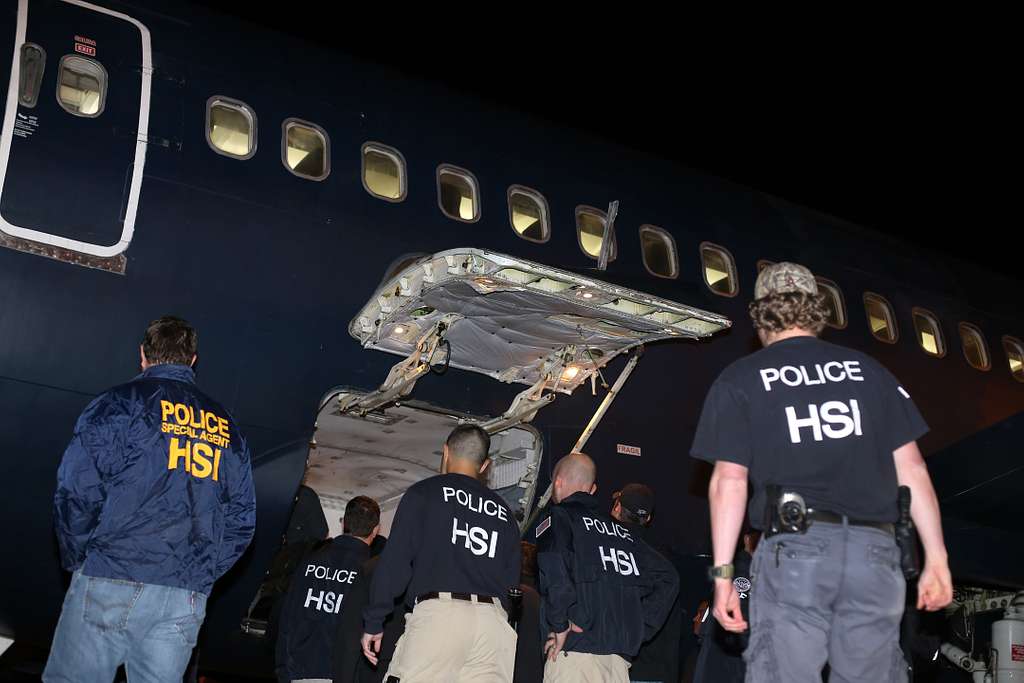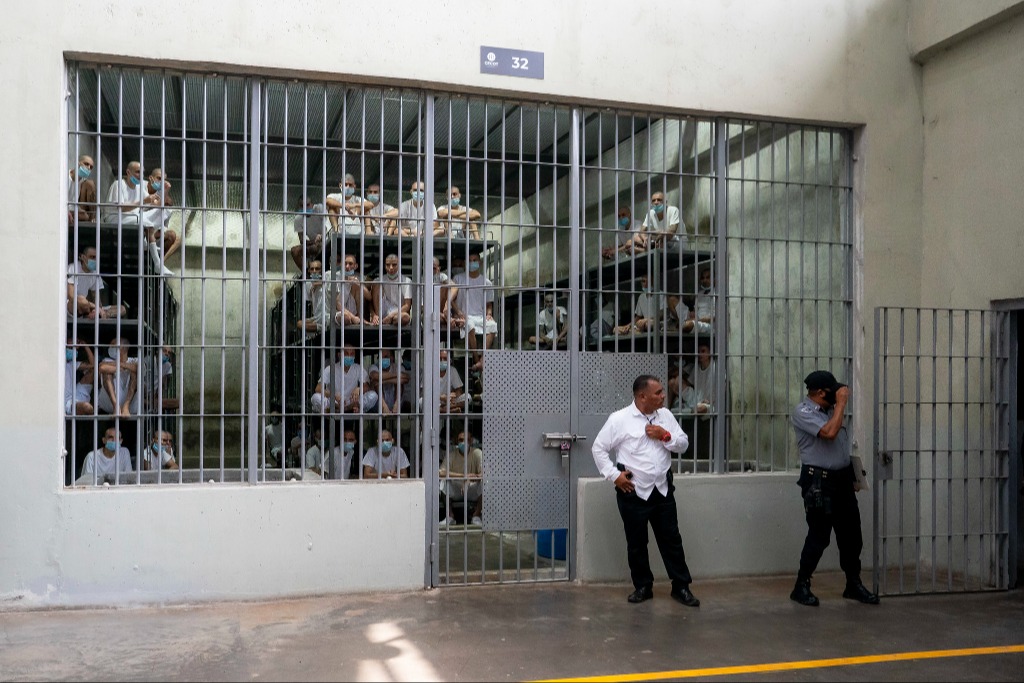Are Tariffs an Emergency Power?
.jpg?sfvrsn=f557f72a_4)
Published by The Lawfare Institute
in Cooperation With

In his first few months in office, President Trump has unleashed a blitz of tariffs and threats of tariffs against Colombia, Canada, Mexico, the European Union, and China. On April 1, the White House declared a U.S. economic emergency and announced tariffs of at least 10 percent across all countries. The president’s aggressive approach—sometimes announced via tweet and with intermittent pauses—has spooked financial markets and generated concern among the legal and academic communities. President Trump’s purported authority for this slew of tariffs stem from the powers Congress delegated to the president under the International Emergency Economic Powers Act (IEEPA) as well as the Trade Expansion Act of 1962.
IEEPA permits the president to “regulate … importation” during a declared “national emergency.” Presumably, this language is the textual basis for President Trump’s tariff actions under IEEPA. Congress has also enacted specific tariff authorities. The Trade Expansion Act authorizes the president, after going through a specified process, “to take action to adjust imports.” The Trade Act of 1974 similarly authorizes the president, after going through a specified process, “to impose duties or other import restrictions.” Is it likely that, through these tariff authorities as well as IEEPA, Congress meant to provide the president with essentially unfettered tariff authority?
Congress passed IEEPA to enable the president to deal quickly with national emergencies, but under a framework in which it could override the president’s actions by a legislative veto. That control mechanism is gone after the Supreme Court’s decision in INS v.Chadha, declaring the legislative veto unconstitutional. Here, we show that the Trump administration’s threats and imposition of tariffs are inconsistent with how tariffs are normally authorized by Congress and present a problematic invocation of IEEPA’s broad, seemingly uncabined language.
The Typical Tariff Process
The Constitution’s Commerce and Imposts clauses give Congress the power to impose tariffs. Congress has delegated to the executive branch the power to “take action to adjust imports” in circumstances that “threaten to impair the national security” of the United States (19 U.S.C. § 1862), and to “impose duties” or “suspend, withdraw, or prevent the application of, benefits of trade agreement concessions” in circumstances that are “unreasonable or discriminatory and burdens or restricts United States commerce” (19 U.S.C. § 2411). Both of these delegations impose a procedural requirement prior to the tariffs taking effect. Section 1862 states that only “after receiving a report [from the secretary of commerce]” does the president have the power “to adjust imports.” Section 2411 states that “if the Trade Representative determines [under the procedures of § 2414 that] … an act, policy, or practice of a foreign country is unreasonable or discriminatory and burdens or restricts United States commerce … the Trade Representative shall take action.” (Section 2411 has a slightly different required determination for subsection (a)).
Both statutes present these procedures as a necessary antecedent to executive action. The Federal Circuit stated as much when describing the § 1862 process in Am. Inst. for Int’l Steel, Inc. v. United States: “When the investigation is completed, the Secretary of Commerce must provide the President with findings and recommendations … the President then must determine whether he concurs with the Secretary’s findings.” The situation is similar for § 2411. In Almond Bros. Lumber Co. v. United States, the Court of International Trade stated that “the sections succeeding 19 U.S.C. § 2411 set out the steps that the [U.S. trade representative] must perform before action can be taken under § 2411, ” finding that the U.S. trade representative did comply with the proper procedural order under the statute for the tariff agreement.
In order for the president to exercise the powers delegated in § 1862, the secretary of commerce must first initiate an investigation to determine “the effects on the national security of imports of the article” in question. The investigation requires the secretary to consult with his counterparts at Defense and other officers and to hold public hearings “if it is appropriate and after reasonable notice[.]” The secretary then must “submit to the President a report on the findings” of the investigation, which must include “the effect of the importation of such article in such quantities or under such circumstances upon the national security and, based on such findings, the recommendations of the Secretary for action or inaction.” Once the decision is made to take an action, the president submits to Congress “a written statement of the reasons why the President has decided to take action.”
Section 2411 provides two ways for the president to exercise the powers delegated by the statute. First, subsection (a) covers “[m]andatory action” and applies whenever the U.S. trade representative determines “that the rights of the United States under any trade agreement are being denied” or that “an act, policy, or practice of a foreign country” is violating a trade agreement with the U.S. or is “unjustifiable and burdens or restricts United States commerce.” Upon such a determination, the trade representative “shall take action.”
Second, subsection (b) provides a discretionary basis for action whenever the U.S. trade representative “determines … [that] an act, policy, or practice of a foreign country is unreasonable or discriminatory and burdens or restricts United States commerce, and action by the United States is appropriate.” Both the mandatory and discretionary actions require the trade representative to undertake an “investigation initiated under section 302 [§ 2412].” These investigations require consultation with appropriate committees. If the investigation is initiated by a petition, the trade representative must “provide opportunity for the presentation of views concerning the issues, including a public hearing.” Finally, the trade representative must determine whether “the rights to which the United States is entitled under any trade agreement are being denied” or if “any act, policy, or practice described in subsection (a)(1)(B) or (b)(1) of [§ 2411] exists.”
Both § 2411 and § 1862 have provisions for consultation, public hearings, and express findings, a process that necessarily will slow down the implementation of actions under each of these statutes. During his first term, President Trump seems to have followed the above procedures when implementing his planned tariffs. But this time, the president decided to bypass these specific tariff authorities, opting instead for a process whereby he can act quickly and unilaterally to impose the tariffs he wants. Trump’s decision to use IEEPA is certainly more expedient, but it is also a novel application of that law and an end run around the process specifically set up by Congress to authorize presidential tariff authority.
A Brief History of IEEPA
Prior to IEEPA, the president’s emergency economic powers were governed by the Trading with the Enemy Act (TWEA, 50 U.S.C. § 4301). The TWEA enabled the president to regulate or prohibit trade with enemies during times of war. Congress enacted the measure in response to World War I and later expanded it to peacetime in 1933.
Congress amended the TWEA by enacting the National Emergencies Act (NEA, 50 U.S.C. § 1601) in 1976 and IEEPA in 1977. The NEA provided “for orderly implementation and termination of future national emergencies.” The effect of IEEPA was to confine the TWEA to instances of declared war and to provide the president with “somewhat narrower powers subject to congressional review in times of ‘national emergency’ short of war.”
Congress considered this overhaul of presidential emergency power to be necessary because the TWEA “confer[red] enough authority [to the President] to rule the country without reference to normal constitutional processes [that is, congressional oversight and control].” As an example, the TWEA allowed the president to “investigate, regulate, or prohibit … any transactions … between the United States and any foreign country” after the declaration of a national emergency. IEEPA limited such powers so that they “may only be exercised to deal with an unusual and extraordinary threat with respect to which a national emergency has been declared … and may not be exercised for any other purpose.”
As part of returning emergency powers to “normal constitutional processes,” Congress included a legislative veto provision in the NEA. Such a veto provision was also considered for IEEPA, but, as the author and a principal sponsor of the bill, Rep. Jonathan Bingham (D-N.Y.), stated, it was “unnecessary since the Congress already ha[d] the authority under the National Emergencies Act to overrule or veto the President’s declaration of an emergency.”
Unfortunately, the Supreme Court’s decision in INS v. Chadha (ruling the legislative veto unconstitutional) rendered this method of legislative control inoperative. This lack of meaningful congressional checks is especially apparent in modern uses of IEEPA in which the executive branch does not even contend that they are using the statute for emergency purposes. When the Obama administration, for example, used IEEPA to impose sanctions on Venezuela, Obama’s deputy national security adviser, Ben Rhodes, acknowledged that “the United States does not believe that Venezuela poses some threat to our national security.”
Tariffs Under the TWEA and IEEPA
In 1971, President Nixon used the TWEA to impose “a supplemental duty amounting to 10 percent ad valorem” on imports. The proclamation created an additional, across-the-board 10 percent tariff on imports, with some notable exceptions. Nixon stated “that if the imposition of an additional duty of 10 percent ad valorem would cause the total duty or charge payable to exceed the total duty or charge payable at the rate prescribed in column 2 of the Tariffs Schedules of the United States, then the column 2 rate shall apply.” In effect, this meant that the increased tariffs could not exceed the statutory rate set by Congress and thus affected only goods that had previously received trade concessions.
Nixon’s proclamation did not cite the TWEA but instead referred to “statutes, including, but not limited to, the Tariff Act of 1930, as amended, and the Trade Expansion Act of 1962,” both of which also delegated tariff authority to the president. When challenged in court over this action, the Nixon administration invoked the TWEA as a statutory basis for the tariff (UnitedStates v. Yoshida Int’l, Inc.). The customs court upheld Nixon’s tariff actions reasoning that “the TWEA authorized the President, during an emergency … to ‘regulate importation,’ [(TWEA § 5(b))] by imposing an import duty surcharge.” The power to regulate importation continued from the TWEA to IEEPA, as the latter merely sought to “provid[e] [the president] somewhat narrower powers [than the TWEA] subject to congressional review.” (H.R. Rep. No. 95-459, 95th Cong., 1st Sess., at 1 (June 23, 1977)). For some commentators, this history leaves it unclear as to whether there is “a basis for distinguishing Yoshida to reach a different conclusion about [IEEPA].”
Yoshida did not, however, provide a green light for all presidentially imposed tariffs under the TWEA/IEEPA. The customs court stated that “[e]ach Presidential proclamation or action under [the TWEA] must be evaluated on its own facts and circumstances.” The customs court emphasized that Nixon’s use of the TWEA was “limited to articles which had been the subject of prior tariff concessions” and did not “tear down or supplant the entire tariff scheme of Congress.” In fact, Nixon’s proclamation was designed so that it would not “disregard [the] congressional will.” The court concluded its analysis by stating that “the President imposed a limited surcharge, as a temporary measure calculated to help meet a particular national emergency, which is quite different from imposing whatever tariff rates he deems desirable.” In the customs court’s view, the former is acceptable, whereas the latter is presumably not.
In contrast to the Nixon administration’s relatively narrow use of the TWEA—which affected only (according to one economic analysis) 52 percent of imports and which could not increase the tariffs above the statutory rates—the recent tariff actions by President Trump under IEEPA purport to target “[a]ll articles that are products of Mexico,” “[a]ll articles that are products of Canada,” and “[a]ll articles that are products of the [People’s Republic of China (PRC)].” Unlike Nixon’s tariffs, the Trump tariffs do not attempt to work within the congressional tariff scheme because they are expressly “in addition to any other duties, fees, exactions, or charges applicable to such imported articles,” and there is no reference to limits set by Congress in specific tariff legislation, let alone issues under the United States Mexico-Canada Agreement of 2020 (USMCA). The USMCA explicitly provides that “[u]nless otherwise provided in this Agreement, no Party shall increase any existing customs duty, or adopt any new customs duty, on an originating good.” On March 6, President Trump amended Executive Orders 14193 and 14194 (tariffs against Canada and Mexico) to exempt goods that are “entered free of duty” under the USMCA.
It is possible this amendment was (at least in part) in response to the potential violation of the USMCA by these tariffs; however, the Trump administration has not made any statement to such effect. Additionally, it should be noted the USMCA provides an exception for “protection of [a country’s] own essential security interests,” but none of the tariff actions by President Trump against Canada and Mexico (or their subsequent amendments) have invoked this provision of the USMCA.
Members of Congress from both sides of the aisle have spoken out against the proposed Trump tariffs. Sen. Chris Coons (D-Del.) stated that the tariffs will “do catastrophic damage to our relationships with our allies and raise costs for working families by hundreds of dollars a year.” Even members of President Trump’s own party expressed concern over the tariffs. Sen. Susan Collins (R-Maine) stated that “the proposed tariffs on Canada would be detrimental to Maine families and our local economies,” while Sen. Mitch McConnell (R-Ky.) said that “tariffs are bad policy.”
Even with this degree of bipartisan opposition to Trump’s tariff plans, there is little that Congress can actually do. While there have been recent efforts to pass a resolution that would, if it were to become law, revoke Canadian tariffs, the only available means of congressional control is by passing a new law or canceling the national emergency declared by Trump. Both approaches would require a joint resolution, which would not become law without a veto-proof majority in both Houses.
The lack of congressional controls is an issue that was highlighted by Congress during the debates leading up to the passage of the NEA. Rep. John Conyers (D-Mich.) had asked, “What happens if the President of the United States vetoes the congressional termination of the emergency power?” (121 Cong. Rec. H27646 (Sep. 4, 1975) (statement of Rep. John Conyers)). Rep. Walter Flowers (D-Ala.) answered, assuring the House that “a concurrent resolution would not require Presidential signature or acceptance. It would be an impossibility that it would be vetoed.” (121 Cong. Rec. H27646 (Sep. 4, 1975) (statement of Rep. Walter Flowers)). After Chadha, the veto risk is very real.
This congressional inability to meaningfully control the president’s powers under IEEPA is precisely the problem Congress attempted to solve back in the 1970s. The TWEA had “become essentially an unlimited grant of authority for the President to exercise, at his discretion, broad powers in both the domestic and international economic arena, without congressional review.” Without the legislative veto in the NEA, the president’s powers under IEEPA warrant an identical concern. President Trump’s use of IEEPA to implement broad tariffs against other nations with minimal process or oversight is inconsistent with the typical process for executive tariffs. Instead, Trump is using IEEPA as a source of (as Rep. Bingham worried in 1977) “unlimited power … to act virtually at will”—the very thing IEEPA was meant to prevent.


.jpg?sfvrsn=ab792c7_4)



